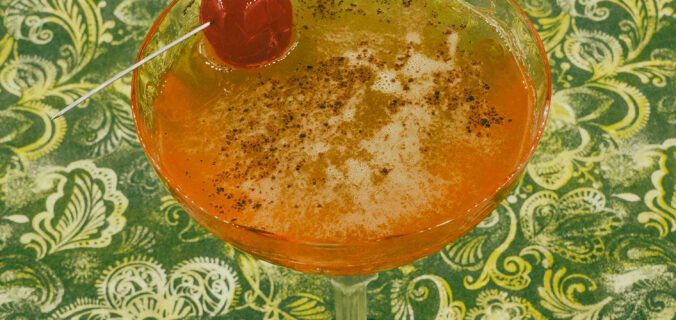As food fads go, sumac might already be passé.
After all, it was more than two years ago that Cooking Light magazine declared that “sumac is having a moment.” It’s been almost six years since Bon Appétit promised that the tart crimson Middle Eastern spice (whose name comes from the Aramaic word for “deep red”) would soon become “your next pantry obsession.” And it was way back in 2010 when the Hartman Group, a food research and consulting firm, predicted that sumac’s star turn in America’s kitchens was just around the bend.
So now it’s 2021, and sumac may well be old news. But as usual, Cuisine Stupide doesn’t catch a trend until it’s way, way down the tracks: I used sumac in cooking for the first time last winter, hunting down the dried version of the spice to use in Alton Brown’s recipe for Crispy Chickpeas (from his book EveryDayCook). Brown persuaded me with his typically pithy and pungent summation of why sumac is so great:
(It is) my secret weapon. I got into sumac when I was studying the history of hummus. Most of us learn to add lemon juice for acidity, but then I ran across some research suggesting that hummus was a standard in many parts of the Middle East long before citrus reached the area via the Indian subcontinent. What did they use instead? The crushed berries of a Mediterranean bush, not the poison sumac we grow in the States. Earthy yet lemony, unique yet oddly familiar, sumac is also a key ingredient in za’atar, which is kind of like the five spice of the Middle East. I tend to use it a lot on fried foods that can use some acidity.
So I gave sumac a spin. The chickpeas weren’t as crispy as I’d hoped—a complaint shared by others—but I was sold on the spice, which gave the garbanzos a fruity counterpoint to the recipe’s touch of cayenne pepper.
I began looking for other dishes that highlight sumac—and there are many—when what should land in my inbox last March but this recipe from Chilled magazine bearing the headline, “What is sumac and why should it be in your shaker?”
Of course. A sumac cocktail.
This recipe couldn’t be simpler, but it does involve some advance prep in the making of the sumac syrup. As you’d expect given the proportions, this is a very bourbon-forward drink. But the sumac gives it a unique flavor. Unique yet oddly familiar, as Brown says.
I don’t plan to rest with the Sumac Sour, either: on my list are the Sumac Martini, the Sumac-Basil Vodka Lemonade Cocktail, and, if I’m feeling really ambitious, a version of a Sumac Sour that contains absolutely no sumac. (It’s named for Yma Sumac, the Peruvian singer.)
Huzzah! Sumac might be démodé in the cooking pot, but it’s de rigueur in the cocktail glass. And it’s your fad-resistant Sunday Special.
Sumac Sour
Adapted from Serjan Midil, Chilled
2 oz. bourbon
1/2 oz. fresh lemon juice
1/2 oz. sumac syrup (see below)
Ground sumac and maraschino cherry for garnish
Shake all ingredients with ice until chilled, strain into serving glass of choice, garnish with a sprinkle of sumac and a cherry.
Sumac Syrup
3 tbsp. ground sumac
2 cups water
1 1/2 cups sugar
Grind dried sumac berries in a spice grinder or use pre-ground. In a small saucepan combine the water and sugar and heat over medium, stirring occasionally until sweetener is dissolved. Add the sumac and allow the mix to steep for five to 10 minutes. Strain through a cheesecloth or fine mesh strainer into a sanitized container and refrigerate for up to a week.

